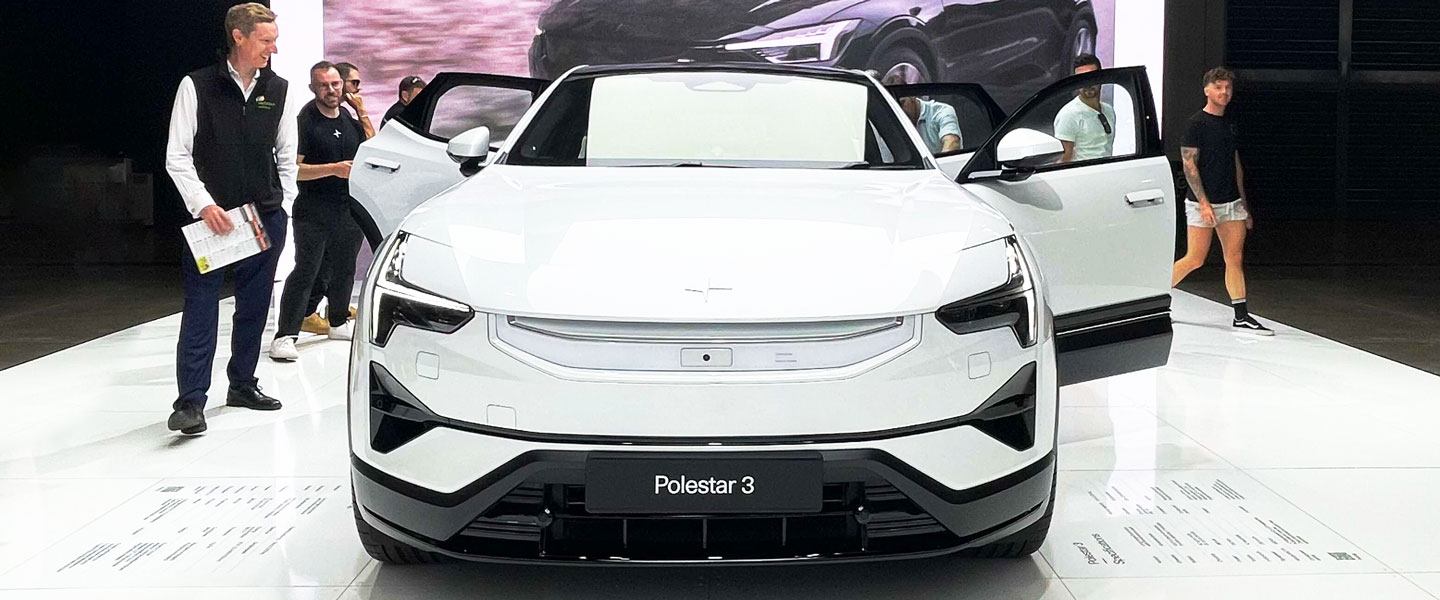

This website uses cookies to improve the user experience. We use cookies in accordance with our NRMA Group Cookie Policy.
This website uses cookies to improve the user experience. We use cookies in accordance with our NRMA Group Cookie Policy.



The Audi Q4 e-tron made its first appearance to the public after its arrival was confirmed at the Melbourne EV Show in September 2023. It joins its flagship Q8 e-tron, offering drivers a more affordable entry into an Audi all-electric.
Available in four variants, including two Sportback options, it is priced from $88,300 before on-roads. Audi is already taking registration of interest with arrival on Australian roads set for the second half of 2024.
It comes with an 82kWh battery that offers 562km WLTP driving range in the base e-tron 45 model, with the range of the 55 quattro due closer to launch.
While the Q4 e-tron was not available for test drive at Everything Electric, crowds were able to sit in, feel and touch the premium interior ahead of its official launch in coming months.
Peugeot displayed its e-2008 and e-Partner van but the real news was that it opened its books for registrations of interest for the e-308 electric hatchback and e-Expert van last Friday.
Though neither were on display, both promise to be strong additions to the local EV market.
The Peugeot e-308, a key player in Peugeot's electric lineup, is the first hatchback from the French brand to arrive in Australia. Though local pricing and specs are yet to be announced, in the UK it is available on in the top-of-the-line Allure trim from £40,050 driveaway.
It is equipped with a 54kWh battery, delivering an admirable WLTP range of up to 429km in combined city and highway conditions (WLTP). It produces a sprightly 115kW of power and 270Nm of torque, ensuring spirited driving dynamics and eco-friendly performance.
Meanwhile, the e-Expert joins Peugeot’s smaller e-Partner electric van. It is powered by a larger75 kWh battery, offering a robust WLTP range of up to 330km to cater to the needs of business users. The electric motor churns out 100kW of power and a considerable 260Nm of torque, balancing performance with utility.


Renault showed off its new Megane E-Tech alongside the new generation Kangoo E-Tech which replaces its older Kangoo Z.E.
The Megane E-Tech crossover, due to arrive in the first quarter of 2024, not so much replaces the long-gone Zoe as outshines it. Priced from $64,900 before on-roads, it has a 60kWh battery which offers 454km range (WLTP).
It is the first model to bear the brand’s new emblem on the nose, which also houses the car’s onboard radar. It also has adaptive headlights that adapt to driving conditions according to traffic and weather. It’s also the most aerodynamic vehicle in Renaut’s lineup with a drag coefficient of 0.29.
The Kangoo E-Tech is a step up from the outgoing Kangoo Z.E., offering up to 285km WLTP range. It is priced from $61,900 before on-roads and promises to offer businesses a decent light-duty option with its 22kW AC and 80kW DC charge rates.
Hyundai stood out from the crowd, putting its high-performance Ioniq 5 N front and centre giving visitors a striking display with its red-accented skirts.
Priced from $111,000 before on-roads, this punchy AWD delivers 450km driving range from its 84kWh battery. That’s not a lot considering the size of the battery but makes sense when you look at the power output and torque – 478kW and 740Nm (770Nm in Boost mode.)
As outlined in our comparison article, the Ioniq 5 N is a compelling option up against the Tesla Model Y Performance and the Mustang Mach-E AWD GT.
Not only does it sprint from 0-100km/hr in 3.4 seconds (using Boost mode), but it also offers functionality such as vehicle-to-load as well as several track features like a drift optimiser, launch control and “virtual gear shift.”

Nestled at the heart of the electric mainstreet within the Exhibition Centre next to the main Mega theatre, was Polestar’s new ground-up Polestar 3.
As the marque’s range-topping SUV, the Polestar 3 is the first to market in Australia from Polestar built on the roomier, ground-up electric SPA2 (Scalable Product Architecture 2) platform. Being an electric-only platform, this allows the brand to deliver more space inside such as an open storage space under the centre console.
Priced from a formidable $132,900 before on-roads, it is powered by a 111kWh battery that offers a generous WLTP range of up to 610 kilometres. With an impressive power output of 380kW and 840Nm torque, the Polestar 3 not only offers exhilarating performance but also an ultra-fast-charging speed of 250kW to reduce charging time when out on the road.

Not far from Polestar was an all-electric SUV from a lesser-known Chinese brand Skywell, distributed in Australia by EV Automotive (EVA). Not to be mistaken for the model with the same name from fellow Chinese EV maker Nio, the ET5 is a classy looking SUV.
Local specs according to the company’s website include three variants, with 52/72/86kWh battery options, delivering 350/400/490km driving range WLTP.
Despite its premium features, including a center touchscreen, wooden dash highlights, and leather seats, there may be a compliance issue: it reportedly lacks the required three top tether points for child seats in the rear, only offering two.
This potential oversight, previously encountered by Tesla, could hinder its ADR compliance, a crucial step for market entry.
